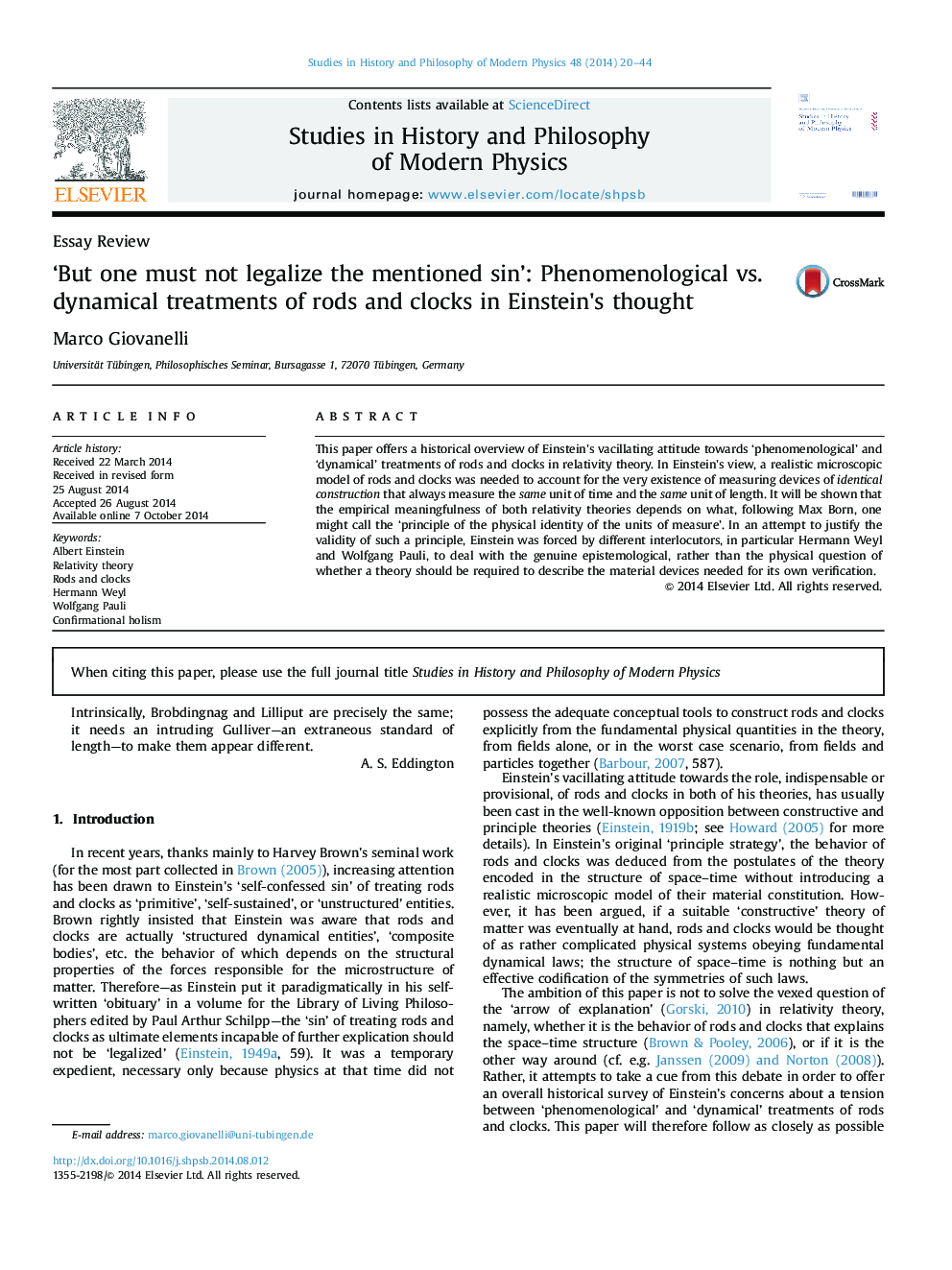| Article ID | Journal | Published Year | Pages | File Type |
|---|---|---|---|---|
| 1161467 | Studies in History and Philosophy of Science Part B: Studies in History and Philosophy of Modern Physics | 2014 | 25 Pages |
•An overview of Einstein׳s attitude toward rods and clocks is provided.•Rods and clocks should give the same results independently of their prehistory.•Relativity theory should account for the existence of identical rods and clocks.•Einstein׳s position is compared to that of Weyl and Pauli.
This paper offers a historical overview of Einstein׳s vacillating attitude towards ‘phenomenological’ and ‘dynamical’ treatments of rods and clocks in relativity theory. In Einstein׳s view, a realistic microscopic model of rods and clocks was needed to account for the very existence of measuring devices of identical construction that always measure the same unit of time and the same unit of length. It will be shown that the empirical meaningfulness of both relativity theories depends on what, following Max Born, one might call the ‘principle of the physical identity of the units of measure’. In an attempt to justify the validity of such a principle, Einstein was forced by different interlocutors, in particular Hermann Weyl and Wolfgang Pauli, to deal with the genuine epistemological, rather than the physical question of whether a theory should be required to describe the material devices needed for its own verification.
